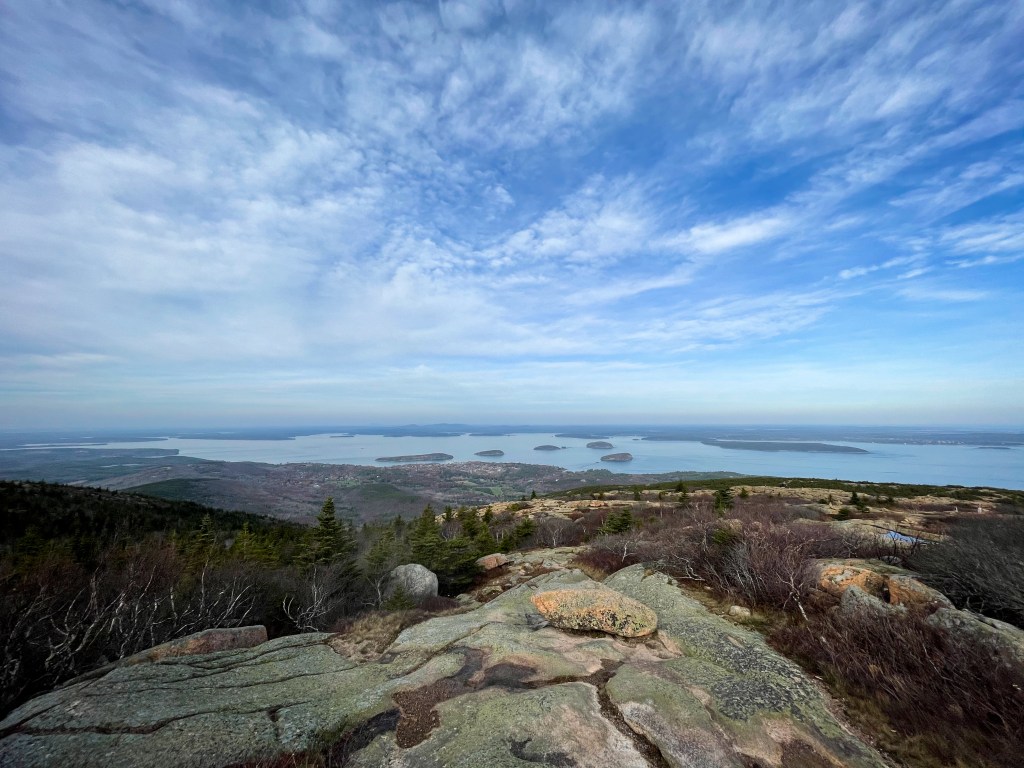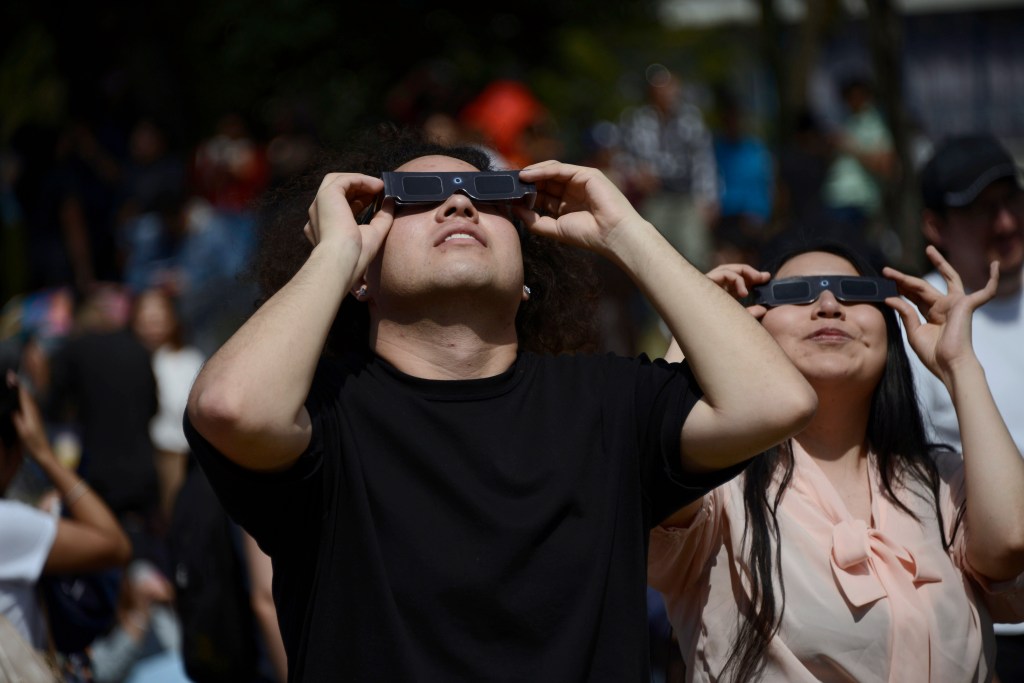A NYC woman recalled a horrifying, zombie-like experience that sent her to the hospital following the 2017 partial eclipse.
Manhattanite Amanda Uhry told The Post she needed 5 stitches in her knee after she experienced the natural phenomenon at Maine’s Acadia National Park — and immediately felt dizzy and took a nasty spill.
“It was pretty bad – I still have a v-shaped scar on my knee,” said Uhry.
“It was looking at it that did it – I’m never going to another eclipse again.”
Uhry and her college-aged daughter secured a plum viewing spot in Acadia Park to get the best vantage point when the moon blocked the sun’s light for a few minutes.
“It was a prominent place to see it so far north,” she proudly told The Post.
Armed with protective glasses handed out at the popular park, Uhry, an NYC private school consultant, found the perfect perch on the famed Jordan Pond and beheld the rare sight, crowing, if only momentarily, that she was a part of history.
Immediately, she sensed both light and dark at once, and recalled thinking, “Is this what it’s like to take LSD and stare at the sun?”
She also noticed a zombie-like effect and said others looked dazed and confused.
“Other people looked weird — shocked and weird.
“Right after the eclipse, I felt dizzy. People told me I looked pale,” said Uhry, an experienced hiker.
She proceeded to hike Otter Cliff even as she felt unbalanced.
“It was the weirdest thing. I started tripping and I fell on my face. I fell straight up and there was blood all over the place,” she said.
She was rushed to the hospital, where she received five stitches to the knee, which had “opened to the bone.”
Uhry developed dry eye syndrome in one eye a month after the 2017 eclipse, with blurriness that still persists.
“I will never f–king look at an eclipse again – ever. I tell all my friends and family – my story scared off several people,” she said.
Other New Yorkers are on edge about the April 8 total solar eclipse, when the moon passes between the sun and earth, completely blocking the face of the sun, which will ominously darken the sky.

However, because NYC is outside the path of totality, potential eye damage can be even more dangerous.
“On some level, a partial eclipse is more dangerous – the part of the sun that’s still visible, and not blocked from the moon, can still damage your eyes,” Dr. Avnish Deobhakta, MD, Associate Professor of Ophthalmology at New York Eye and Ear Infirmary of Mount Sinai, told The Post.
“Just like 2017, we’re not going to be in the path of totality and because of that, the partial sliver of the sun can cause problems, particularly for the retina.”
Though rare, some eye damage can be permanent.
The eye doctor recalled a young woman who walked into the ER days after the Aug. 21, 2017 eclipse, having “developed a crescent-like burn on her retina.”
Nia Payne of Staten Island went to her boyfriend’s office to glimpse the celestial phenomenon, borrowing what she thought were protective glasses from a stranger. But hours later she noticed vision problems, including a dark spot in the center of her vision.
“It was like dark gray. It was a little bright, but I didn’t know what solar eclipse glasses are supposed to look like. I looked into the sun for 30 seconds – that was it,” Payne, then 26, told CBS.
Hours later, she noticed “the afterimage of the sun still in my eyes.”
“You know, it wouldn’t go away. And then I realize, ‘Oh no!’”
Payne was diagnosed with solar retinopathy – retinal damage from exposure to solar radiation – in both eyes, a permanent condition with no treatment.

Her experience was reported in a medical journal where Dr. Deobhakta explained that the retina is “the camera of the eye” which converts lights into electrical energy “so the brain can understand it.”
Less than four months later, Payne was still adapting.
“So far, it’s a nightmare, and sometimes it makes me very sad when I close my eyes and see [the spot]” she told CNN in December 2017.
“It’s embarrassing. People will assume I was just one of those people who stared blankly at the sun or didn’t check the person with the glasses,” she added.
“It’s something I have to live with for the rest of my life. But it could be a whole lot worse, and I try to count my blessings.”
Weeks before the upcoming eclipse, Dr. Deobhakta put out an advisory and told The Post that using only ISO-standard glasses with filters protective enough to block out the rays, is of the utmost importance.
“Don’t wing it. It can be seconds that cause damage that’s profound – and you won’t know until after.”
Some New Yorkers are even concerned about their furry friends and the impact the solar event can have on their pets.
“An eclipse has a profound effect on animals,” said Dini von Mueffling, whose dog, Olive, acted strangely after the 2017 eclipse.
After returning to her Hamptons home to sleep off the partial eclipse she was “definitely feeling really weird and funky after.”
The communications specialist took her year-old Lagotto for a walk on the beach at the end of the day.
The 20-pound pooch inexplicably paddled so far into the ocean that “we couldn’t get her back.”
“She wasn’t coming back, you could barely see her,” recalled the panicked dog mom.
She was unable to wade through the waves and reach her pooch. Luckily, a good samaritan walking by was able to swim out into the ocean and rescue the pup.
“She never had done anything like that before – it was a miracle that we got her back,” said von Mueffling, who isn’t taking any chances this time around as she prepares to glimpse the eclipse’s path of totality in Rochester.
“She will be in her crate during the eclipse. Animals do really strange things.”














